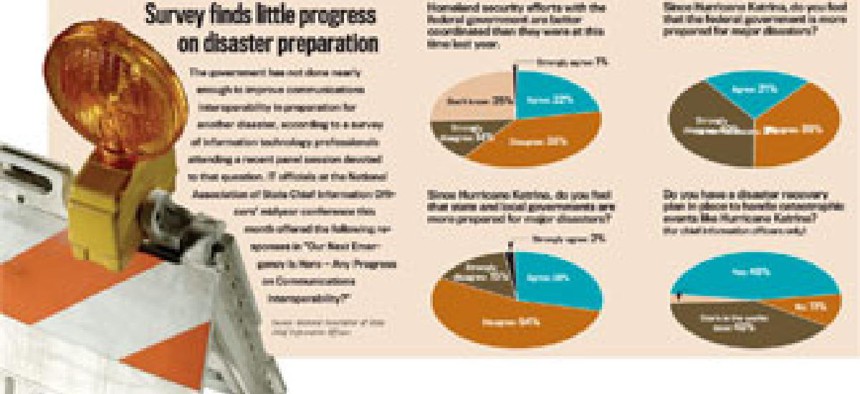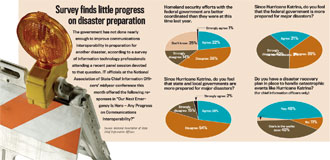Roadblocks hamper emergency response system coordination

Federal funding and a lack of standards affect compatible communications at the state level.
When terrorists crashed an airplane into the Pentagon in 2001, they exposed a fundamental flaw in the District of Columbia’s capacity for dealing with disaster: Police officers and firefighters were unable to talk to one another via radio or mount a coordinated response to the panic that beset Washington, D.C., when thousands thought more hijacked planes were heading for targets in the city. Put to the test, the emergency response system failed.
Five years later, emergency preparedness at the federal, state and local levels continues to lurch toward seamless information exchange — the backbone of coordinated emergency response.
“It’s hard,” said Robert LeGrande, the District of Columbia’s deputy chief technology officer. “Very difficult and very costly.”
Achieving interoperable communications — a Holy Grail of sorts for first responders — is easier said than done.
That was the consensus of information technology experts who met earlier this month in Washington, D.C., for the National Association of State Chief Information Officers’ midyear conference. Participants in a panel discussion said progress has been slow and erratic.
The discussion was titled “Our Next Emergency Is Here — Any Progress on Communications Interoperability?”
The uncoordinated deployment of emergency communications systems undermines the goal of interoperability, IT experts say.
Money pouring into local jurisdictions from the Homeland Security Department is fueling the problem, they say, by allowing localities to purchase communications systems without regard for common technical standards.
About 80 percent of those federal funds go directly to local governments, subverting states’ authority to impose technical standards.
“There is great technology out there, but the absence of a national, voluntarily chosen standard of interoperability is a major roadblock,” said a senior DHS staff member who spoke on condition of anonymity. “What good is a system unless you have buy-in from key jurisdictions?”
Localities often must choose between function and cost. If a municipal government can buy radios adequate for local use for $800 each or radios compatible with a statewide system for double the cost, the cheaper option often gets the nod, said Phil Bates, IT director of Utah’s Department of Public Safety.
Utah’s emergency response system is more advanced than most other states’. In anticipation of the 2002 Winter Olympics in Salt Lake City, the state created the Utah Communications Agency Network, a quasigovernmental agency that strengthened the state’s interoperable communications.
The organization deployed a Motorola radio system that boosted the efficiency of limited frequencies to serve an eight-county area. During the Olympics, the system supported federal law enforcement agents, whose temporary communications system failed.
Utah was successful in using state funds to entice localities to adopt compatible communications systems even before the 2001 terrorist attacks and the ensuing gush of federal funds. Every dispatch center in the state now connects to a wireless integrated network.
Having succeeded at home, Utah is racing to promote interoperability standards with its neighbors: Arizona, Colorado and New Mexico. The Federal Communications Commission’s allocation of broadband spectrum to public safety organizations has created the potential for a technology stampede by localities eager to transmit real-time video to local command centers, Bates said.
“If we don’t get on top of this, we’ll have a bunch of disparate networks out there,” he said. In the District of Columbia, the 2001 attacks created an urgency that hadn’t existed before. The city invested in a fiber-optic communications network that became active two years ago and deployed mobile repeaters to extend radio coverage to the city’s dead spots, including the interiors of massive federal office buildings that impede signals. The district has also deployed a wireless accelerated responder network, and it has agreed with Virginia and Maryland on interoperability communications network standards.
Despite the progress, proposed cuts by federal lawmakers to the district’s technology budget imperil the overhaul of the city’s communications systems.
“We hold out hope that we can finish this,” LeGrande said.
Pulley is a freelance writer based in Arlington, Va.
Click here to enlarge the chart (.pdf).






